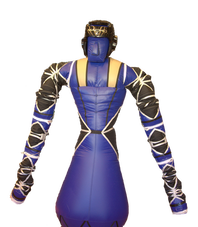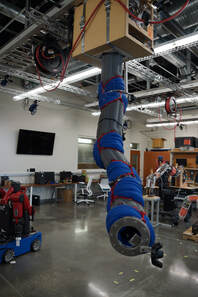Model Predictive Control Of Compliant Robots
|
While compliance can help robots be safer around humans and in modeled environments, it can make them underdamped and less able to perform useful tasks. By effectively modeling the compliance of robots and using Model Predictive Control the robots can be controlled in away that they will no longer act underdamped while retaining their original compliance. King Louie was the first high degree of freedom soft robot for which we implemented a model predictive controller. |
|
|
Initial work was done on Baxter from Rethink Robotics and showed great potential. A low level torque controller is in place that causes Baxter to act compliantly, much like a soft robot, as seen in the video. When step inputs are applied there is significant overshoot and it is clear that Baxter is underdamped. With the proper model predictive controller however, a series of inputs that are just right cause the arm to move smoothly and not overshoot, while still not losing the compliance of the arm.
Here is a link to a paper about this controller. |
|
The next step for us was to implement a model predictive controller on a soft robot. This video is a repeat-ability test of a model predictive controller implemented on King Louie.
Here is a link to a paper about the model predictive controller for King Louie. |
|
|
Kaa is another robot from Pnebotics that is newer. We implemented a model predictive controller on Kaa. This conroller was special because it performed model predictive control for each joint independently and treated the other joints as disturbances. It achieved such and such performance.
Here is a link to a paper about the special controller we ran for Kaa. |
|
This controller for the blow modeled joints was really special.
Here is a link to a paper about it. |
|






